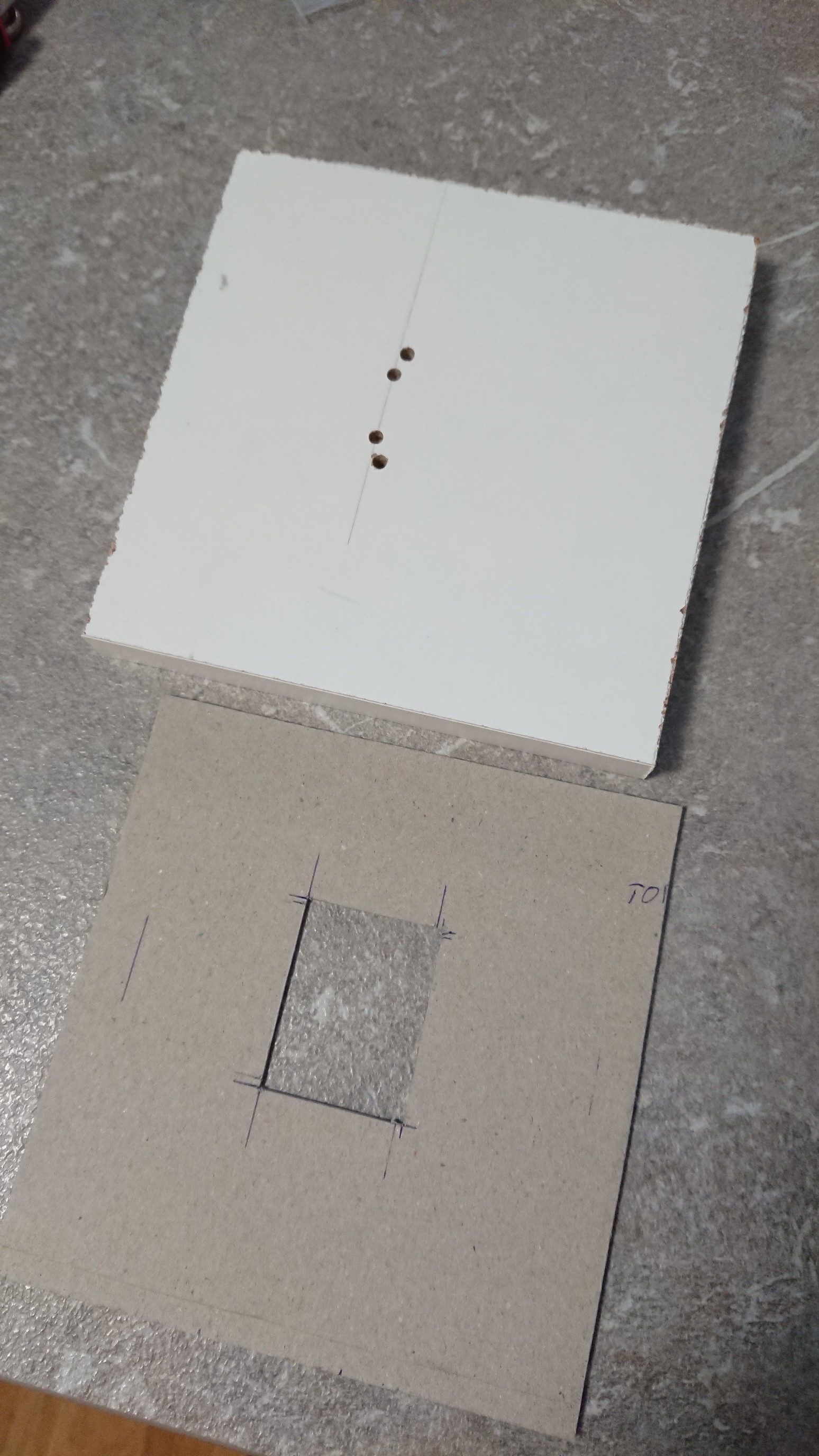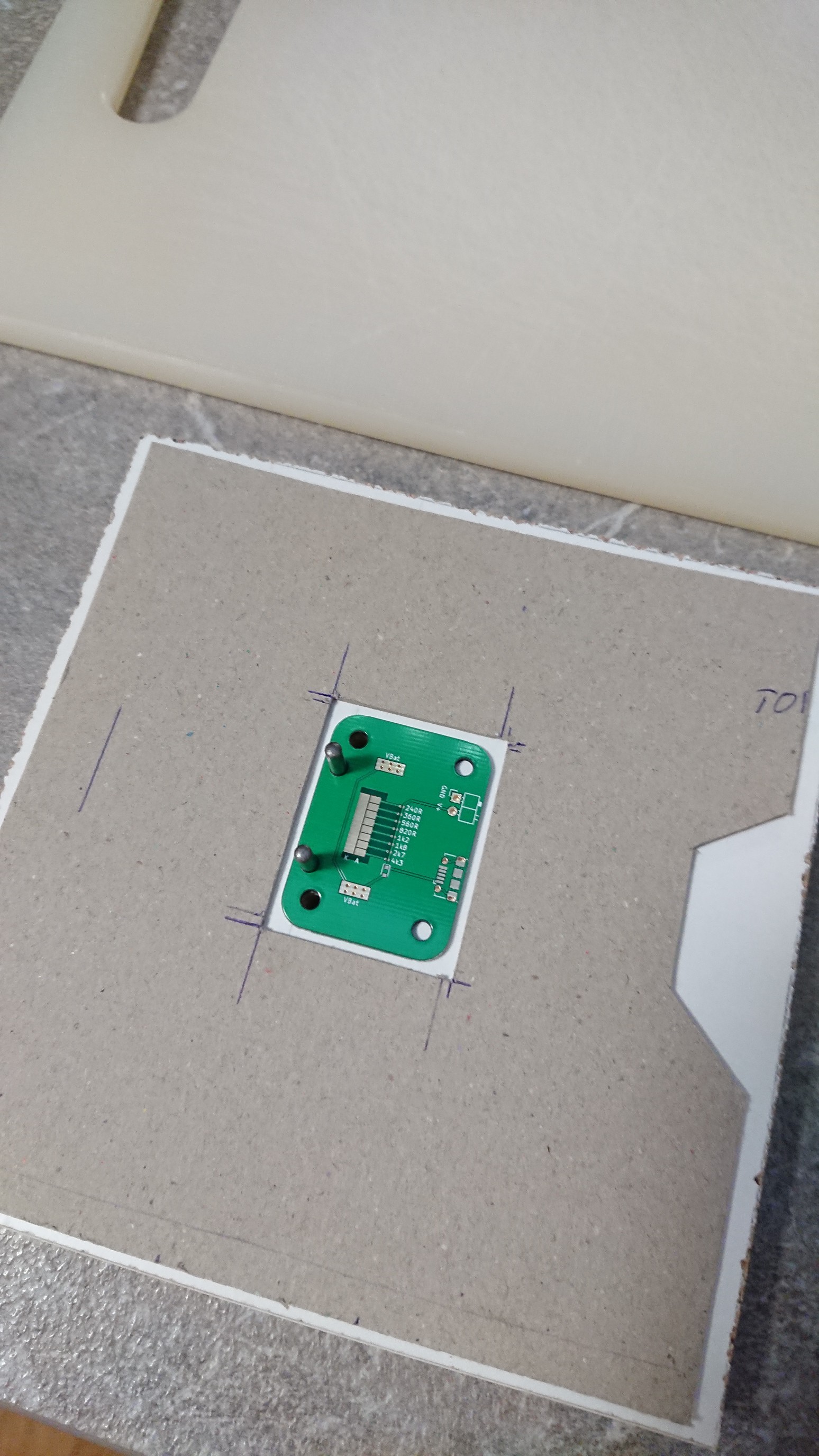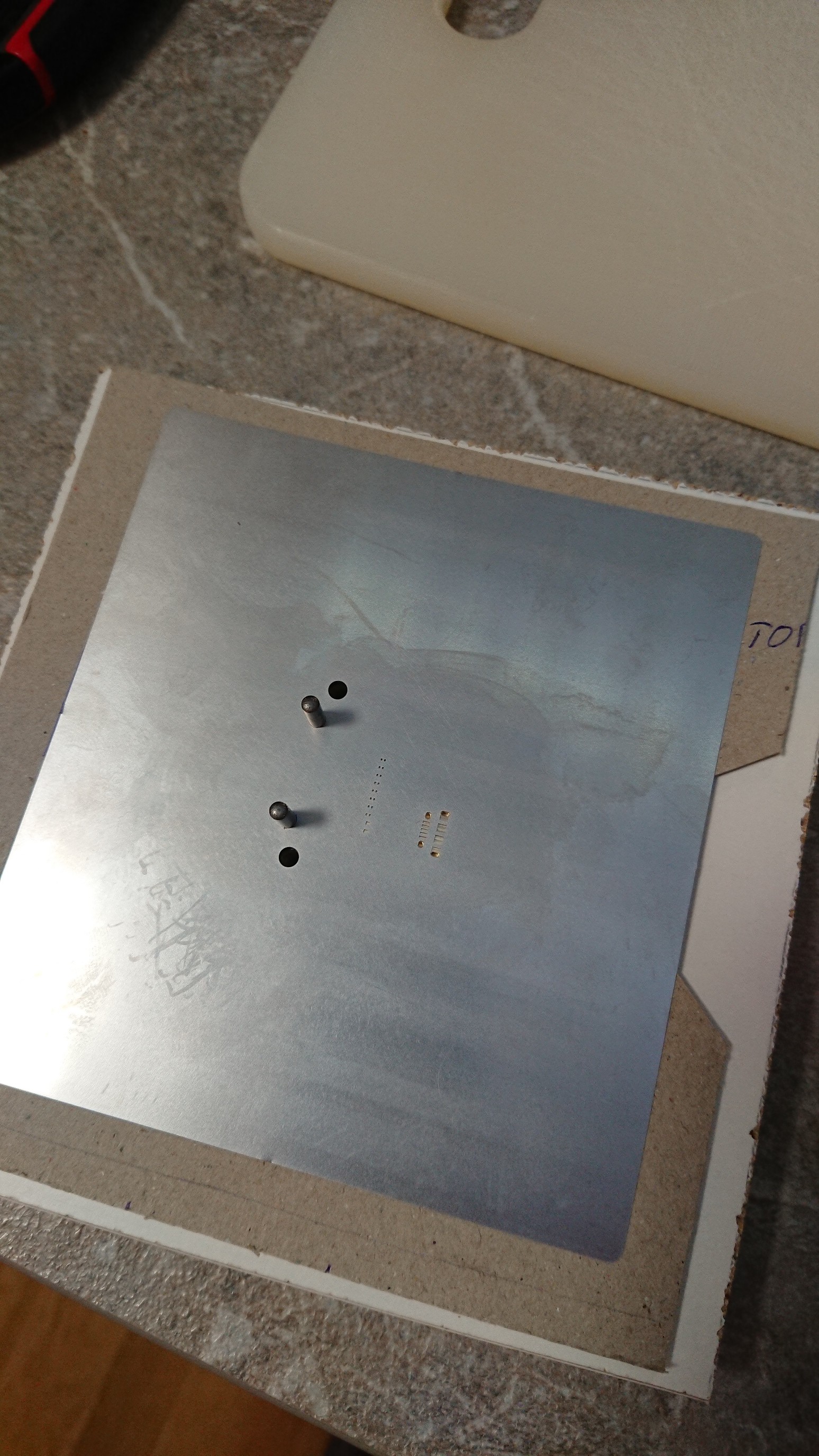In a way, I knew this already - but lifting the stencil after paste application is one of the seemingly simple steps that can mess up all the work you put into alignment and spreading the paste. If the stencil is flat on the board / work surface, it's almost impossible to lift it without shifting.
Since I'll be making many of these boards I decided to create a little jig. What we need:
- a piece of smooth (sealed? don't know what it's called) chipboard
- a piece of cardboard with the same thickness as the PCB
- the alignment pegs I had shown in an earlier log
- glue
The chipboard is drilled to make room for the pegs and a pair of screws, and the cardboard gets a cutout for the PCB:

Then I though about the lifting problem described above, and added an extra cutout before gluing it to the chipboard. Here it's shown with PCB and pegs:

And now with stencil - still aligns very well:

When paste application is done, I can hold down the stencil with a finger, remove the pegs and lift the stencil without harming the paste job.
There's still one major drawback: When the pegs are removed, nothing keeps the PCB from shifting because the cardboard isn't fitted tightly. Maybe next time.
 Christoph
Christoph
Discussions
Become a Hackaday.io Member
Create an account to leave a comment. Already have an account? Log In.
Why would you remove the pegs before the stencil? I thought it was a brilliant idea to constrain the stencil against lateral movement while you lift it, but then you went and removed the constraint just before the critical moment.
Are you sure? yes | no
I thought so too at first. But when you lift the stencil, the pegs will tilt a tiny little bit in the stencil and the PCB and get stuck. So when you lift any part of the whole thing with the pegs still installed, you can't really see if the PCB stays down or not and potentially mess up your paste job. That's why I hold it down with a finger instead, but there's certainly room for improvement. So far I had to re-do the paste on two out of 31 PCBs.
Are you sure? yes | no
Ah, that makes sense. My idea would need tight fitting and perfectly vertical holes in the chipboard, so the pins can't be pulled out easily and the stencil won't snag on them as you lift it. But now that I think about it, an even simpler solution would be to make the chipboard smaller than the stencil so you can get your fingers under the edges before touching it. Should be pretty easy to lift straight up without any constraint then.
Are you sure? yes | no
I think I also have to address what I wrote: "lifting the stencil after paste application is one of the seemingly simple steps that can mess up all the work" and you're right when you say that I remove the constraint before lifting it. However, I place my finger on the stencil to push it against the board, then remove the pegs, and then lift the stencil. From my experience that's much safer than e.g. removing tape after the stencil was taped down.
Maybe I should make another log with drawings of what I've tried to make everything a bit clearer...
Are you sure? yes | no